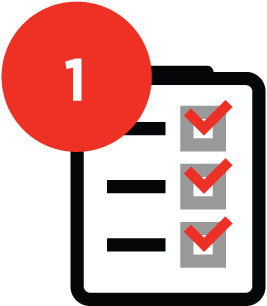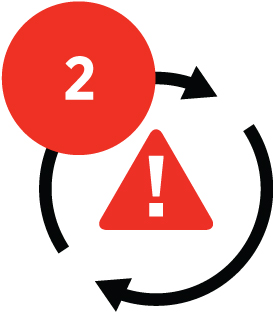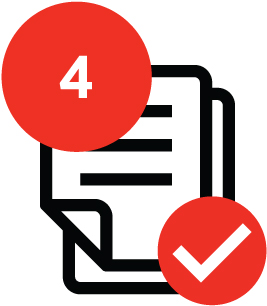Whether they happen at a weigh station or at the roadside, inspections are part of the job when driving a commercial vehicle. While you might dread inspections, several actions on the driver’s part can make one go much more smoothly.
At a recent EROAD event, we invited Washington State Trooper, Andy Stoeckle, to share his deep level of knowledge on the topic gained during his many years performing Commercial Motor Vehicle (CMV) roadside inspections.
Officer Stoeckle shared a wealth of information. We summarized his hour-long presentation into ten handy tips to help with your next inspection.
Tips for easier roadside inspections

Do your pre-trip Inspections
First, do your pre-trip inspection. The best way to avoid roadside inspection delays is to fully inspect your vehicle prior to getting on the road. A complete pre-trip inspection helps you ensure that your tractor and trailer are roadworthy and gives you the opportunity to address issues before embarking on your journey. This is also the best opportunity to double check how your load is secured. It is a frequent reason that officers cite for pulling over a CMV.

Pay attention to CVISN alerts
Second, most interstate scales have Commercial Vehicle Information Systems and Networks (CVISN) connections and will be able to tell you whether you need to pull off to the scale house or not. Slow down, stay in the right lane and exit into the scales if you are prompted to do so. If your carrier has a low CSA score, you are more likely to bypass weigh station inspections.

If stopped, find a safe location
Third, if you are pulled over while driving, ensure that you have a safe location to get your entire rig off the road. Do not stop in the roadway or block traffic. This causes safety issues for you, the officer and other traffic on the road. It’s likely that the enforcement officer has an idea of where they would like you to pull over, but if you miss that location, turn on your signal to show that you will be pulling over. Travel to the next safest location on the roadway.

Be organized and prepared
Fourth, when the officer approaches your cab, have your driver’s license and other supporting documents gathered and ready for the inspection. If you are driving for a carrier, they will likely have prepared a binder to hold all your important documents. If you are running your own business, build your own binder to stay organized and efficient. Documents to include in the binder include:
- Your CDL
- Medical Examiner’s Certificate
- Paper logs tracking Hours of Service (HOS) if you are not required to use Electronic Logging Devices (ELD). If required to use an ELD, you must still carry at a minimum 8 days’ worth of blank logs for use in case the ELD does not function properly.
- Driver Vehicle Inspection Reports (DVIRs)
- Bills of Lading for your cargo
- Any hazmat specific documentation if applicable

Be Courteous and Professional
Fifth, understand that your attitude toward the enforcement official can make your inspection quicker and more pleasant for everyone involved. Be courteous and professional. Answer questions succinctly and clearly. Don’t feel the need to overshare or talk the officer’s ear off. A confrontational attitude will not help you get back on the road quickly.

Know what ELD you’re using, or if you’re using an AOBRD
Sixth, when using an electronic log, understand what type of device you have. Is it an ELD or an AOBRD? Each device type has different federal requirements and functions. This is one of the primary points of confusion for many enforcement officials.

Ask for the officer’s safety official code when transferring logs
This ensures that your logs are transferred quickly and directly to the officer.

Know the eRODS log transfer process for your ELD
In addition to asking for their safety official code, you need to understand how to operate the ELD and enter the code into the ELD to transfer the logs. Making the log transfer smooth and easy for the officer puts you far ahead of many of your peers and eliminates needless time and confusion.

Have your ELD manuals and instructions at the ready
Ensure that you have the appropriate ELD documentation in your cab – this includes user manuals and instruction sheet for roadside inspections and malfunctions. You can provide printed copies, or show them in electronic form, but they must be available in the cab to avoid violations.

Get familiar with what enforcement officers will look for
Finally, check out the Commercial Vehicle Safety Alliance (CVSA) website. They make much of their documentation for enforcement officers public there, so you can see what the officers will be looking for during inspections. The standard North American a Level 1 inspection procedures are available online here.

